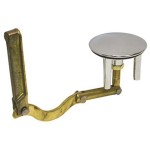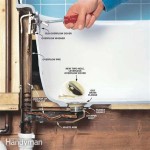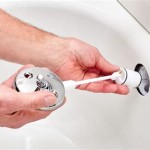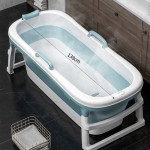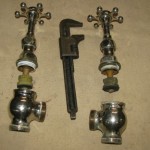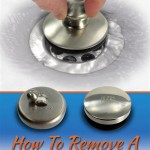How To Install A Shower Screen On a Bathtub
Installing a shower screen on a bathtub is a common home improvement project that can significantly enhance the functionality and aesthetics of a bathroom. Shower screens effectively prevent water from splashing outside the bathing area, reducing the risk of slips and falls while maintaining a cleaner and drier bathroom environment. This article provides a comprehensive guide to installing a shower screen, covering essential preparation steps, the installation process itself, and important considerations for ensuring a successful outcome.
Preparing for the Installation
Before commencing the installation, proper preparation is crucial. This stage involves gathering the necessary tools and materials, accurately measuring the space, and thoroughly inspecting the existing bathtub and surrounding walls. A well-prepared workspace will contribute to a smoother and more efficient installation process.
The first step is to assemble all the required tools and materials. These typically include:
- Shower screen kit (containing the screen, frame, hinges, and mounting hardware)
- Measuring tape
- Pencil
- Level
- Drill with appropriate drill bits (for tile, drywall, and wood, as applicable)
- Screwdriver (Phillips head and flathead, depending on the hardware)
- Silicone sealant (mildew-resistant bathroom sealant)
- Caulk gun
- Safety glasses
- Work gloves
- Cleaning supplies (e.g., household cleaner, sponge, clean cloths)
Once the tools and materials are gathered, accurate measurements are essential. Measure the distance between the wall where the screen will be mounted and the outer edge of the bathtub. Double-check these measurements to ensure the shower screen will fit correctly. Note any irregularities in the wall or tub surface that may require adjustments during installation.
Thoroughly inspect the bathtub and surrounding walls for any damage, such as cracks, chips, or water damage. Repair any existing damage before proceeding with the installation. Pay close attention to the condition of the grout between tiles; if the grout is crumbling or missing, it should be repaired to ensure a watertight seal. Clean the wall and tub surfaces where the shower screen will be mounted to remove any dirt, grime, or mildew. This will ensure proper adhesion of the sealant.
Carefully unpack the shower screen kit and verify that all the components are present and undamaged. Review the manufacturer's instructions thoroughly before beginning the installation. Familiarize yourself with the specific steps and any unique requirements for your particular shower screen model. Lay out the components in an organized manner to facilitate easy access during the installation process.
The Installation Process
The installation of a shower screen generally involves several key steps: attaching the wall profiles, installing the shower screen itself, and applying sealant. Each step requires precision and attention to detail to ensure a secure and watertight installation.
Begin by positioning the wall profiles. These are the vertical metal pieces that will be attached to the wall and will support the shower screen. Use a level to ensure the profiles are perfectly vertical. Mark the locations of the screw holes on the wall using a pencil. Use the appropriate drill bit to drill pilot holes at the marked locations. If drilling through tile, use a specialized tile drill bit to prevent cracking. Insert wall anchors into the pilot holes to provide a secure hold for the screws. Align the wall profiles with the pilot holes and secure them to the wall using the screws provided in the shower screen kit. Ensure the profiles are firmly attached and level before proceeding.
Carefully lift and position the shower screen within the wall profiles. Depending on the design of the screen, it may slide into the profiles from the top or side. Follow the manufacturer's instructions for the specific method. Ensure the screen is properly aligned and seated within the profiles. Some shower screens have adjustable hinges that allow for fine-tuning the alignment. Adjust the hinges as necessary to ensure the screen opens and closes smoothly and that it seals properly against the bathtub. Once the screen is properly aligned, secure it to the wall profiles using the screws or fasteners provided in the kit. Tighten the screws securely, but avoid over-tightening, which could damage the screen or the profiles.
Sealing the shower screen is critical to prevent water leaks. Using a caulk gun, apply a bead of mildew-resistant bathroom sealant along the inside and outside edges of the wall profiles where they meet the wall. Also, apply sealant along the bottom edge of the shower screen where it meets the bathtub. Ensure the sealant is applied evenly and smoothly to create a watertight seal. Use a wet finger or a sealant smoothing tool to smooth the sealant and remove any excess. Allow the sealant to dry completely according to the manufacturer's instructions before using the shower. This typically takes at least 24 hours.
Important Considerations and Best Practices
Several additional factors can contribute to a successful shower screen installation. These include selecting the right type of screen, ensuring proper ventilation, and performing regular maintenance to prolong the life of the installation.
There are various types of shower screens available, including framed, frameless, sliding, folding, and pivoting models. Consider the size and layout of the bathroom, as well as personal preferences, when selecting a shower screen. Frameless shower screens offer a sleek, modern look but may require more precise installation. Sliding and folding screens are suitable for smaller bathrooms where space is limited. Pivoting screens provide easy access to the bathtub.
Adequate ventilation is essential to prevent the buildup of moisture, which can lead to mold and mildew growth. Ensure the bathroom has a functioning exhaust fan that is used during and after showers. Consider opening a window if possible to improve ventilation. Regularly clean the shower screen and surrounding surfaces to remove soap scum and mildew. Use a mild detergent and a soft cloth or sponge to avoid scratching the screen. Dry the screen after each use to prevent water spots.
Periodically inspect the shower screen and sealant for any signs of damage or wear. Replace any damaged components promptly to prevent leaks and further damage. Reapply sealant as needed to maintain a watertight seal. Check the hinges and other moving parts regularly and lubricate them if necessary to ensure smooth operation. By following these maintenance tips, the shower screen can be kept in good condition for many years.
Finally, if uncertain about any aspect of the installation process or lack the necessary skills and tools, it is always advisable to hire a professional installer. A professional can ensure the shower screen is installed correctly and safely, preventing potential problems and ensuring long-term satisfaction. This is particularly important when dealing with tile or complex plumbing systems.

Installing A Bath Screen

How To Install A Shower Screen Over Bath Full Tutorial With Craig Phillips Bathroommountain

How To Install A Bath Screen

How To Install A Bath Screen

How To Fit A Shower Screen On Bath 8 Steps

How To Fit And Install A Bath Screen Luna Spas

How To Fit A Bath Screen Step By Diy Guide

How To Fit A Shower Screen Drench

How To Fit A Bath Shower Screen In 9 Steps

How To Install A Shower Screen Tutorial Guide Diy


